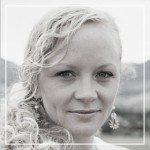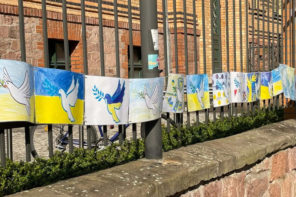One Hour in Paris: A True Story of Rape and Recovery is one part personal memoir, one part intellectual exploration into one woman’s highly traumatic experience of rape and her ongoing, life-long endeavor to heal – as much as one can – from it. In an era where we have seen many women step up and speak out against sexual perpetrators that happen to be famous and powerful men – such as Jian Ghomeshi, former host of the popular Canadian radio show, “The Q,” and American comedian and former television star, Bill Cosby – Freedman’s book is a timely read not only because it deals with the issue of (heterosexual) rape and sexual violence, but because it reminds us that behind these women’s stances against Ghomeshi and Cosby, and all the public support and vitriol they inspire, “there can be tremendous cost to individuals who bury their experience and carry it as a secret. This can accentuate the shame they struggle against and open a chasm between their private selves; their emotional, physiological, and psychological realities; and their public personas – between who we are and how others see us” (p.78).

One Hour in Paris was written 20 years after Freedman was raped and thus 20 years into her continuous recovery from the trauma of that experience.
While she acknowledges that psychological trauma can vary historically and culturally (something that anthropological readers might find a little bit effaced throughout this book – more on that to come), Freedman is interested in how the emotional, cognitive, and physiological impacts of trauma might be something that all survivors of sexual violence can relate to. Yet how universal is the experience of, and suffering from, trauma (p.vii)?
The premise to such a question is that if there are widely-recognisable and generalisable outcomes from traumatic experience (especially in terms of somatic responses and neurobiological plasticity), than there might be widely-applicable therapies and roads to healing, like the ones that Freedman eventually found after years of struggling with panic attacks, PTSD, addiction, and sexual fear: “With enough time and effort, survivors have a chance of moving through the memory of their experience and making it a place of transformational and emotional growth” (p.viii). In addition to “moving through memory,” sharing stories and breaking the public silence on rape are also means of survivor solidarity that Freedman emphasises in this book: “Sometime ago I made a commitment to myself to tell my story, in part because I am persuaded by the notion that there are some phenomena, some of life’s events, that can be best accessed from the inside…My hope that through focusing intimately inward I am able to relate to something that others can connect with” (p.ix).
The motivation to share her story also comes as retaliation against the “social and cultural pressure on women to keep their stories private” which for “for many [serves as] an insurmountable hurdle” (ibid). One Hour in Paris thus aims to be a scream in the midst of that silence. For North American readers, this intervention is heard loud and clear.
Yet for readers looking for more cultural and historical nuance beyond North America, particularly when Freedman goes on to volunteer for WAR (Women Against Rape) in Botswana, they might find themselves straining to hear the voices of the woman and girls Freedman encounters there.
Thus, if there is one critique of the book to anticipate, it lies in Chapter 4, Africa: 2008, if only because Freedman previously (and subsequently) does such a remarkable job weaving together her personal story with the research literature on rape, trauma, and recovery that one wishes to see a little more attention paid to the complexities and intimacies of living as a rape survivor in Botswana. There is additionally a small feeling of let down because she provides solid context for how she personally became interested in Africa as “ground zero in the war against women” in terms of the inordinate prevalence of rape and HIV/AIDS amongst women and girls (p.115-119). This does not come off as a recapitulation of the “dark Africa” trope, but rather as one rape survivor’s empathetic curiosity and desire to connect across nation-state and socio-cultural borders in order to expose the myriad “problems associated with patriarchy” (p.116). Thus, Freedman is further pulled to Africa because she sees a “counterattack” happening as women refuse to stay silent about being raped and, for many of them, becoming afflicted with HIV/AIDS (p.121).
At this point, she provides an anthropological caveat, noting there is “cross-cultural variation in the ways that women process and express their experiences of trauma” especially in terms of not always needing to verbalise these experiences: “we can also communicate through our actions and the choices we make in our lives each day” (ibid). That being said, once Freedman does make it to Africa – Maun, Botswana in particular –the reader is given an introduction to the country and its structure of patriarchy (p.133-139). Split between common (state) and customary (tribes and communities) law, women and girls in Botswana are more susceptible to sexual violence and HIV/AIDS as customary law essentially sees them as the property of men (p.136) and lacking “authority to negotiate appropriate sexual relations” (p.138). To explain this system, Freedman simply states that such “structural inequalities” are “rooted in cultural stereotypes” (ibid). It is at this point, given Freedman’s previously elegant, well-researched and written intertwining of research literature and personal journey, that one would expect an illustration of what those “cultural stereotypes” might consist of; instead, the explanation is left at that, and we enter into an all-too-brief and nigh-cliché recounting of her time (a little over two weeks) volunteering with WAR.
Perhaps one of the most-missed opportunities comes after Freedman tells her rape story during a group session. After first receiving only silence once she finished speaking (“Had I broken some cultural norm in telling my story in all its graphic depiction?” [p.145]), the women began “peppering me with questions”, like “Did my rapist use a condom?” and comments to the effect that they “had no idea that people in countries like Canada were subject to rape” (ibid). After this verbal exchange, Freeman and the women “finished the session by drawing a picture of an imaginary garden, our own make-believe sanctuary” that even two young girls, also victims of rape, joined in to make (ibid). Freedman then concludes by noting “we shared our pictures of our safe havens and our hopes for a nonviolent future”, but shares nothing of the details from her drawing or the others’ (p.146).
This would have been a perfect opportunity to show, through the nonverbal medium of art and aesthetics (albeit a textual description of them), exactly what safety and nonviolence look like shared between rape trauma survivors.
Though readers might be left wanting a more detailed, informative picture on how women and girls in Botswana and other parts of Africa live through rape and find healing, in the end Freedman brings us full circle – or as much as one can given the contingency of personal memory – through her story of rape and recovery (p.172). About a year after volunteering with WAR, she returns to Paris in 2009 where at last, “the emotional hold that boulevard Massena had has over me for close to two decades had been deflated” (p.160). Though she was still triggered in the aftermath of revisiting this place, and even in the writing of this book, Freedman recognises that empowerment has happened. In sharing her life story, Freedman contributes her own unique counterattack – that of a philosopher, academic, and rape survivor – to the silencing of sexual assault and living with trauma. A reader is thus left wondering: what other testimonies will now come forward, and communities of support will emerge, because of books like One Hour in Paris?
Freedman, Karyn L. 2014. One Hour in Paris. A True Story of Rape and Recovery. Chicago: University of Chicago Press. 208 pp. Hb: $20.00. ISBN: 9780226073705.









